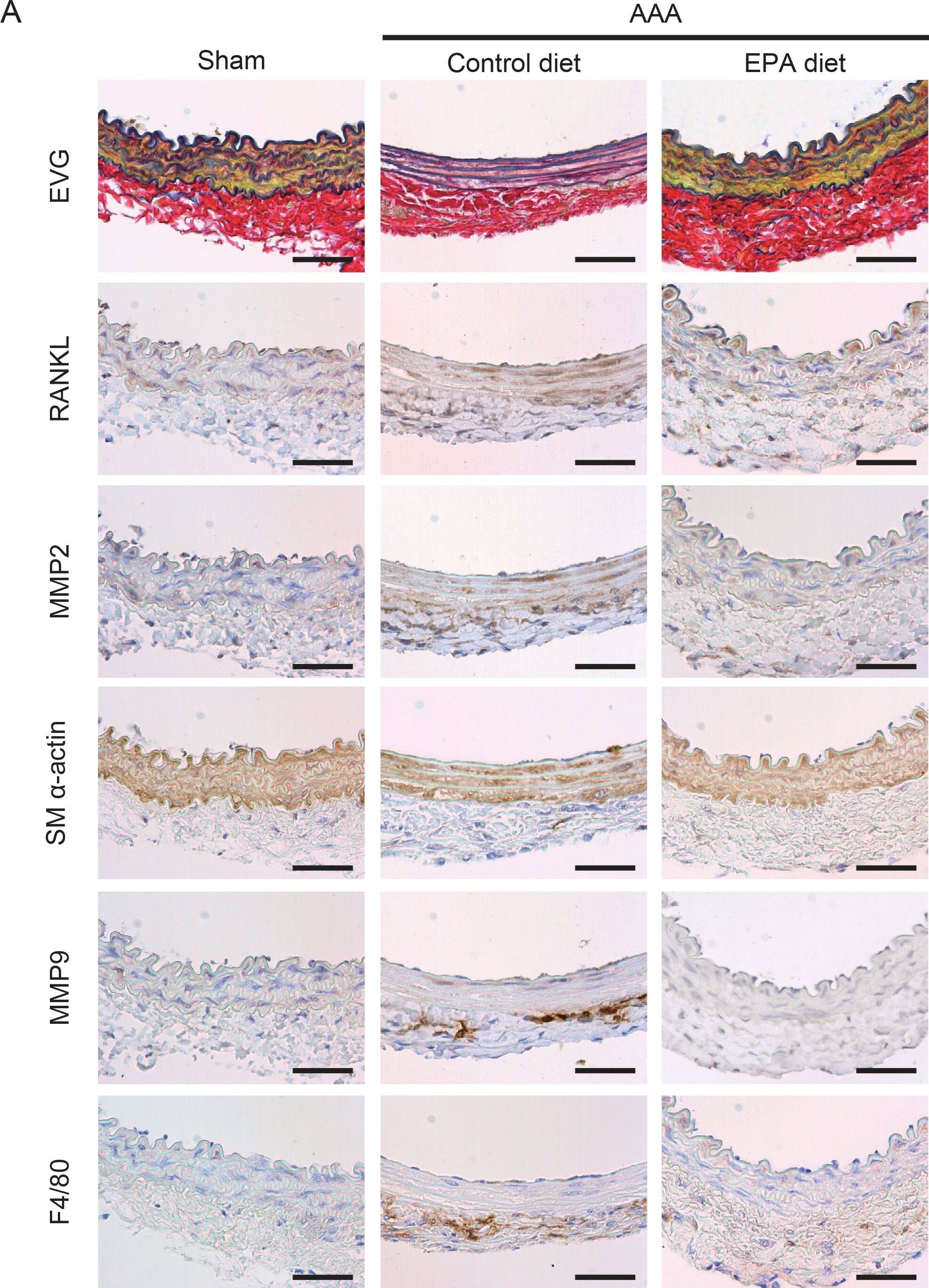Mouse TRANCE/TNFSF11/RANK L Antibody
R&D Systems, part of Bio-Techne | Catalog # AF462


Key Product Details
Validated by
Species Reactivity
Validated:
Cited:
Applications
Validated:
Cited:
Label
Antibody Source
Product Specifications
Immunogen
Arg72-Asp316
Accession # O35235
Specificity
Clonality
Host
Isotype
Endotoxin Level
Scientific Data Images for Mouse TRANCE/TNFSF11/RANK L Antibody
Osteoclast-like Cell Formation Induced by TRANCE/ TNFSF11/RANK L and Neutralization by Mouse TRANCE/TNFSF11/RANK L Antibody.
In the presence of Recombinant Mouse M-CSF (20 ng/mL, 416-ML), Recombinant Mouse TRANCE/TNFSF11/RANK L (462-TR) induces osteoclast-like cell formation in mouse splenocytes in a dose-dependent manner (orange line), as measured by TRAP (tartrate-resistant acid phosphatase) solution assay. Under these conditions, osteoclast-like cell formation elicited by Recombinant Mouse TRANCE/TNFSF11/ RANK L (30 ng/mL) is neutralized (green line) by increasing concentrations of Goat Anti-Mouse TRANCE/TNFSF11/RANK L Antigen Affinity-purified Polyclonal Antibody (Catalog # AF462). The ND50 is typically 0.02-0.06 µg/mL.Detection of Mouse TRANCE/TNFSF11/RANK L by Immunohistochemistry-Paraffin
MMP2, MMP9, and RANKL expression in AAAs.A. Immunohistochemical staining for indicated proteins of serial sections of aortas one week after CaCl2 treatment. Elastic van Gieson staining is also shown. SM alpha-actin and F4/80 were stained to locate SMCs and macrophages, respectively. Shown are representative images of 4 or more samples in each group. Scale bars, 50 µm. B. Relative positive staining area of MMP2, MMP9, and RANKL in sections from control diet and EPA diet groups. n = 4–5. *P<0.05. Image collected and cropped by CiteAb from the following open publication (https://dx.plos.org/10.1371/journal.pone.0096286), licensed under a CC-BY license. Not internally tested by R&D Systems.Applications for Mouse TRANCE/TNFSF11/RANK L Antibody
Immunohistochemistry
Sample: Perfusion fixed frozen sections of mouse thymus
Western Blot
Sample: Recombinant Mouse TRANCE/TNFSF11/RANK L (Catalog # 462-TR)
Neutralization
Mouse TRANCE/TNFSF11/RANK L Sandwich Immunoassay
Reviewed Applications
Read 2 reviews rated 5 using AF462 in the following applications:
Formulation, Preparation, and Storage
Purification
Reconstitution
Formulation
Shipping
Stability & Storage
- 12 months from date of receipt, -20 to -70 °C as supplied.
- 1 month, 2 to 8 °C under sterile conditions after reconstitution.
- 6 months, -20 to -70 °C under sterile conditions after reconstitution.
Background: TRANCE/TNFSF11/RANK L
TRANCE (receptor activator of NF-kappa B ligand [RANK L], also called TNF-related activation-induced cytokines, osteoprotegerin ligand [OPGL], and osteoclast differentiation factor [ODF]), is a member of the tumor necrosis factor (TNF) family. In the TNF superfamily nomenclature, TRANCE is referred to as TNFSF11. TRANCE was originally identified as an immediate early gene upregulated by T cell receptor stimulation. The murine TRANCE cDNA encodes a type II transmembrane protein of 316 amino acids with a predicted cytoplasmic domain of 48 amino acids and an extracellular domain of 247 amino acids. The extracellular domain contains two potential N-linked glycosylation sites. Mouse and human TRANCE share 85% amino acid identity. TRANCE is primarily expressed in T cells and T cell rich organs, such as thymus and lymph nodes. The multi-functions of TRANCE include induction of activation of the c-jun N-terminal kinase, enhancement of T cell growth and dendritic cell function, induction of osteoclastogenesis, and lymph node organogenesis. RANK is the cell surface signaling receptor of TRANCE. RANK has been shown to undergo receptor clustering during signal transduction. Osteoprotegerin, a soluble member of the TNF receptor family which binds TRANCE, is a naturally occurring decoy receptor that counterbalances the effects of TRANCE.
References
- Wong, B.R. et al. (1997) J. Biol. Chem. 272:25190.
- Anderson, D.M. et al. (1997) Nature 390:175.
- Nakagawa, N. et al. (1998) Biochem. Biophys. Res. Commun. 245:382.
- Kong, Y-Y. et al. (1999) Nature 397:315.
Long Name
Alternate Names
Gene Symbol
UniProt
Additional TRANCE/TNFSF11/RANK L Products
Product Documents for Mouse TRANCE/TNFSF11/RANK L Antibody
Product Specific Notices for Mouse TRANCE/TNFSF11/RANK L Antibody
For research use only
